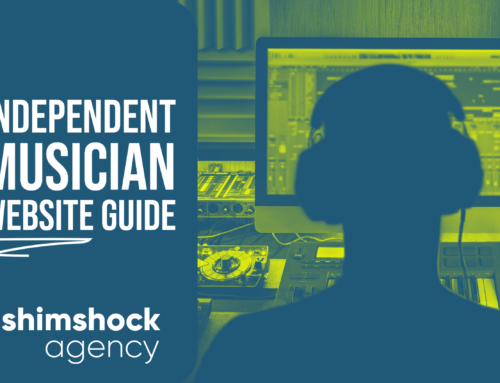Do you want to get your music in front of more people? Of course you do! One of the best ways to do that is through email marketing. In this blog post, we’ll walk you through the process of drafting an effective email subject line, designing an attractive email, and using some secret tricks to get your music in front of more fans. Let’s get started!
Email promotion is still our primary method of digital promotion for a number of reasons.
- It has the highest promotional value in terms of both time and cost.
- It is easy to operate for both the sender and the recipient.
- It creates a rewarding experience for the recipient.
To be honest, it’s mind-boggling to me that more artists don’t take advantage of email lists. It’s still by far the most effective method of getting your message across to your fans and network.
I’d like to provide a few tricks that I keep in the back of my head whenever I’m writing an email (for any audience).
SUBJECT LINES: [MUST READ] Very Important
The subject line the line of text you must master in order to get someone to even open your email. This little component is the bane of my existence. I’ll share with you what I’ve learned to be the most effective… depending on the audience.
Keep it short and sweet: You should always aim for around 50-60 characters in your subject line. This ensures that your message is clear and concise, and that it doesn’t get cut off in someone’s inbox.
Make it personal: One way to stand out in someone’s inbox is to make your email feel like a personal
If the email audience is one that you’re looking to introduce yourself to (e.g. business partners, venues, publications, etc) than it is best to adopt a more formal and informative tone. Here are a few subject lines that work with a little explanation on why I believe they work.
- The Equation: “SUBJECT: Introducing the Yellow Birds (Tame Impala meets Arctic Monkeys)”. This works because it immediately contextualizes your band in the reader’s mind. However, if you fail to deliver on this promise or over-exaggerate your sound, you will set them up for disappointment.
- Matter-Of-Fact: “SUBJECT: Meet the Yellow Birds – Psychedelic Rock from the SF Bay Area”. This message is effective because it states exactly what your band is and where they’re from. Many publications are regionally focused so mentioning your region should play well to that audience. Music reviewers want to have THE pulse on their region.
- Friendly Opening: “SUBJECT: Based on your recent posts, I think you’ll like my new song”. This is a tricky approach to pull off because you’ll need to familiarize yourself with the publication, the author, and have a reasonable belief that your music would fit well on their site.
Play around with these until you find one that fits your voice. Takes some time but it should feel authentic.
Now that you’ve nailed the subject line, let’s discuss the bulk of the email. The message body…
MESSAGE BODY: Every Email Is A Gift.
Once the reader has read the subject line and has decided to click, the email will appear on their screen. This is an important experience to consider. What is the immediate reaction we want the reader to experience?
In a vast majority of cases, I am a believer in the good old plain text email. I’m not an absolutist by any means, there circumstances where a designed email template is the superior choice. But in general, I think that a plain text email comes across as more sincere, personal, and authentic.
When designing an email template there are a few key things to consider:
- The overall aesthetic of the template should be consistent with your branding.
- The template should be designed with a “mobile first” mentality. This means whether you expect the intended audience will open on their computer or on their phone. Typically people under 45 read personal emails on their phone. For all other cases, focus on the desktop/laptop/professional market.
If you decide to create a designed email. Here’s the most important criteria.
The template should be designed with the following hierarchy in mind:
- Header (Name + Logo): Clearly indicate who you are and showcase your brand.
- Main Message/Offer: This should be less than a few sentences. Get to the point!
- Supporting Image: Show the artist, preferably a professional photo
- Call to Action: Make it clear, obvious, and exciting.
- Footer (Contact Info + Social Links): If they want to find out more about you, make it super easy.
Whenever I write an email, I think to myself, how would I want this to look if I was getting this email. The answer is to make it awesome – nothing is more awesome than free stuff! The mantra “Every Email Is A Gift” should be the most important takeaway from this article. Give them something and then always have a PS with an extra something – music video, unreleased song, a demo, a cover, something fun. It doesn’t need to be much. We just want people to LOVE getting your emails.
Email marketing can be a great way to connect with new fans and grow your audience. Keep your subject lines short, sweet, and personal. Design your emails with a “mobile first” mentality. And finally, make sure there is a clear call to action for the reader.
If you have any questions or comments about email marketing for musicians, please reach out! I’m always happy to chat.



Leave A Comment